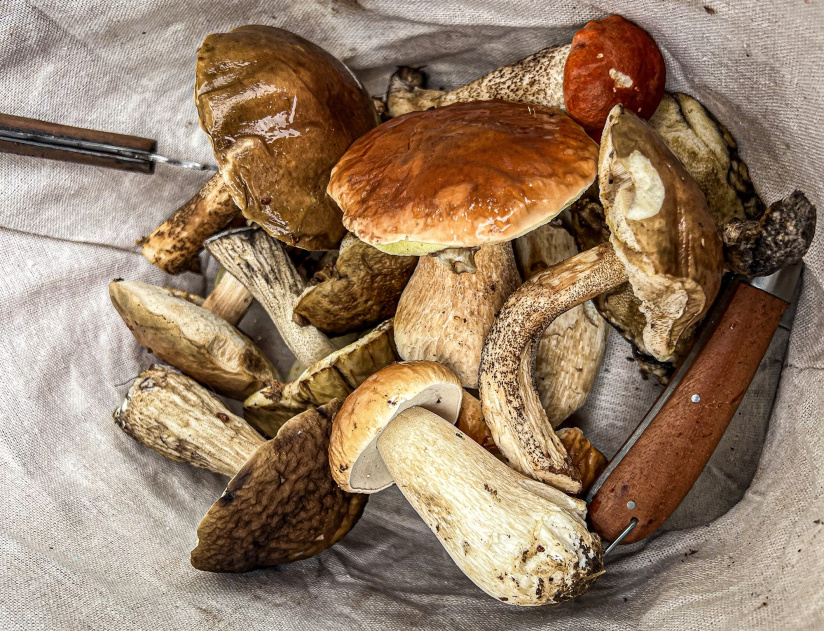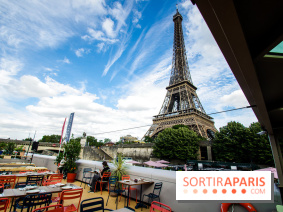With the current good weather, mushrooms are in for a real treat. So now's the time to take a walk in the woods and harvest some delicious mushrooms. But be careful not to pick the wrong ones. We give you a list of the forests where you can find them and tips on how to recognize them.
Autumn marks the return of mushroom picking to the Île-de-France region, an activity that appeals to nature lovers everywhere. Many varieties of edible mushrooms can be found in our forests, but care must be taken to avoid picking mistakes. Here are a few tips on how to recognize them, as well as a selection of the best spots to go in search of these sylvan delights in the region.
Île-de-France is home to around 55 state-owned forests and 153 non-state-owned forests, offering a diversity of environments conducive to mushroom growth. These forests, located on soils unsuited to intensive agriculture - such as the dry, sandy soils of the Fontainebleau forest or the damp, clayey soils of the Rambouillet forest - are ideal for mushroom picking in spring, summer and autumn. Among the most popular are the Forêt de Fontainebleau, Villefermoy (between Le Châtelet-en-Brie and Nangis), Nanteau (south of Nemours), as well as the Forêts de Ferrières and Monceau. In dry weather, we recommend targeting wetter areas, such as the north of the Fontainebleau massif or Villefermoy. After heavy autumn rains, forests with sandy soils, such as the south of the Fontainebleau massif and Nanteau, are particularly rich in mushrooms, as is the Fausses-Reposes forest at Marne-la-Coquette.




Edible mushrooms in Île-de-France
Among the edible mushrooms found in Île-de-France, several varieties stand out:
- Ceps: recognizable by their brown cap and thick stalk, they often grow under oaks and beeches.
- Boletes: a mushroom characterized by a fleshy cap, a sturdy stem and pores under the cap. Depending on the species, they can be recognized by their varied colors and reactions to touch, but care must be taken as some varieties are toxic.
- Girolles: yellow-orange in color, they give off a fruity scent. Found under deciduous trees such as birch and oak.
- Pied-de-mouton: these white or cream-colored mushrooms have prickles under the cap instead of lamellae, making them easily recognizable.
- Coulemelles: also known as high lepidopterans, they have a large, light-brown cap with scales, and a foot with a movable ring.
- Chanterelles: bright yellow, funnel-shaped and often growing in groups.
However, several poisonous or deadly species resemble these edible mushrooms. When in doubt, always show your harvest to a pharmacist or consult an expert mycologist to avoid any risk of poisoning.
Forests where to find mushrooms in Île-de-France
The forests of the Île-de-France region are overflowing with mushroom-picking opportunities. Here's a detailed list, sorted by department, of the best forests in which to go in search of edible mushrooms:
-
Seine-et-Marne (77)
- Forêt de Fontainebleau: famous for its biodiversity, this is an ideal playground for picking ceps, chanterelles and hog's feet. Its oaks, pines and beeches provide an ideal environment.
- Forêt de Crécy-la-Chapelle: less frequented, this forest abounds in ceps and coulemelles, with vast wooded areas ideal for quiet picking.
- Forêt de Ferrières: not far from Marne-la-Vallée, this forest is also home to ceps, girolles and pieds-de-mouton, particularly in its deciduous undergrowth.
- Forêt de Villefermoy: near Provins, ideal for finding ceps and chanterelles, especially after a light rain.
-
Yvelines (78)
- Forêt de Rambouillet: vast and dense, this is one of the best spots for picking ceps and chanterelles, particularly in its oak and birch zones.
- Forêt de Saint-Germain-en-Laye: easily accessible from Paris, this forest offers a wide variety of mushrooms, including girolles, often hidden under ferns.
- Forêt de Marly: less well known, this forest is an excellent place to collect ceps and chanterelles, particularly in its damp, shady areas.
- Forêt de Thoiry: located near the famous zoo, this forest abounds in ceps and girolles.
-
Essonne (91)
- Forêt de Sénart: this forest is ideal for finding girolles and coulemelles. Oak and birch trees create a favorable environment for mushroom growth after the first autumn rains.
- Forêt de Dourdan: located in the south of Essonne, this forest is renowned for its ceps, chanterelles and pieds-de-mouton.
- Forêt de Rougeau: near Corbeil-Essonnes, this small forest is home to porcini mushrooms and chanterelles. Its less-frequented paths allow you to pick in peace and quiet.
- Bois de la Roche Turpin: not far from Limours, this wood is rich in ceps and pieds-de-mouton, especially in its shady parts.
-
Hauts-de-Seine (92)
- Bois de Meudon: this small urban wood hides mushrooms such as houndstooth and sometimes ceps, particularly in the clearings and under the beech trees.
- Bois de Boulogne: although much frequented, a few coulemelles and girolles can sometimes be found here, especially after the autumn rains.
-
Seine-Saint-Denis (93)
- Parc départemental de la Courneuve: although mostly developed, some wooded areas of the park are home to mushrooms such as coulemelles and pieds-de-mouton.
-
Val-de-Marne (94)
- Bois de Vincennes: vast and much-visited, this woodland also hides spots where ceps and chanterelles grow, often hidden in less accessible undergrowth.
-
Val-d'Oise (95)
- Forêt de Montmorency: with its beech and chestnut trees, this forest abounds in ceps, girolles and pieds-de-mouton. Walkers will also find amanitas, but beware: some are poisonous.
- Forêt de l'Isle-Adam: this forest is a must for picking chanterelles and ceps, especially in the damp, shady areas.
- Forêt de Carnelle: this chestnut forest is a well-known spot for picking sheep's feet and chanterelles. Coulemelles can also be found in sunny clearings.
Reminder of safety advice
When picking mushrooms in the Île-de-France region, it's essential to follow a few simple rules to avoid any risk of poisoning:
- If a mushroom is not formally recognized as edible, we don't pick it.
- Only pick mushrooms that look fresh and intact.
- If in doubt, have your harvest checked by a pharmacist or consult a mycologist.
- It's advisable to read up or take a guide with you to learn how to recognize the different species.
Mushroom picking can be a beautiful walk, but it requires great vigilance. Thanks to the forests of the Île-de-France region, you can immerse yourself in nature while filling your basket with autumnal delights. If you're in any doubt about a mushroom, don't mix it up, put it aside so that it can be identified by a chemist. Avoid touching the mushrooms you're not sure about by hand. Some applications enable you to recognize mushrooms, but you need to remain vigilant and always ask a chemist if you have any doubts.



















